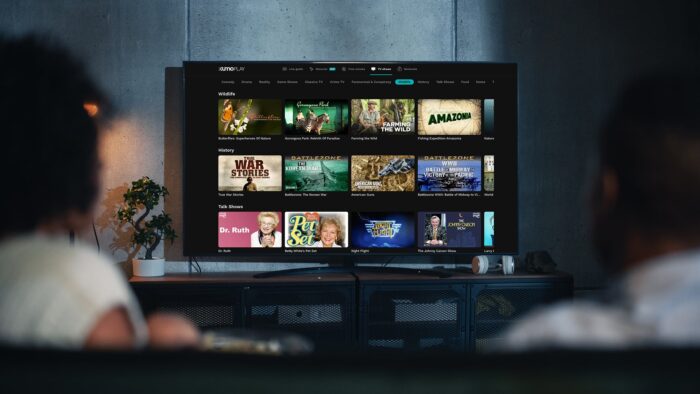With the world of streaming, TV advertising, and digital marketing changing rapidly every day, it can be hard to keep up with all the new terms and devices. Luckily, we’ve summarized the latest terminology for you in the glossary below.
Jump ahead: The Basics | Types of Content & Devices | Advertising Data & Metrics
The Basics: Types of Advertising & Targeting
Digital Advertising
Digital advertising refers to the communications a company uses to promote its brand, services, or products using various digital platforms and channels.
Types of digital advertising include display advertising, social media advertising, video advertising, and many more.
Video Advertising
Video advertising is defined as promotional video content that plays before, during, or after streaming content. Some experts in the industry have also come to refer to display ads with video content as a type of video advertising.
Audience Targeting
Audience targeting refers to delivering an ad to the appropriate audience. This may be done through behavioral, psychographic, or geographic targeting. This type of segmentation allows you to deliver more personalized advertising or experiences to potential customers based on the data you have on their needs and behavior.
Addressable TV Advertising
Addressable TV advertising is the ability to deliver an ad to a specific audience segment at the household level. This may happen on linear TV only or on multiple platforms (TV, Video on Demand, and Streaming) to reach the audience across all screens or devices. Those segments could be matched or modeled by behavioral, demographic, and geographic factors from 1st, 2nd, or 3rd party data sets.
Types of Content & Devices
Linear TV
Linear TV is live, ad supported TV that has scheduled programming and ad breaks.
Streaming Services
Streaming services are ad supported, streaming video service that has live feeds and/or video on demand.
Advanced TV
Advanced TV is an umbrella term that refers to television content that evolves beyond traditional linear TV models. It includes Addressable TV, Over-the-Top (OTT) and Connected TV (CTV).
OTT
OTT, which stands for “over-the-top,” refers to any streaming service that delivers video content over the internet. Some examples of OTT platforms include Netflix, Hulu, and Peacock.
Connected TV (CTV)
Connected TVs, or CTVs, are television sets that are connected to the Internet via OTT devices, Blu-ray players, streaming boxes or sticks, and gaming consoles, or that have built-in internet capabilities (Smart TVs) and can access a variety of long-form and short-form web-based content.
Connected TV devices include:
Smart TVs
Smart TV examples include Xumo TV, Vizio, Samsung, LG, Hisense, TCL, etc.
OTT/CTV Devices
OTT/CTV devices include Xfinity Flex, Roku, Chromecast, Amazon Fire Stick, Apple TV, and the major gaming consoles.
Tablets, Phones, Desktops, Laptops via sites and apps
Examples include Apple (iPhone, iPad, Mac), Samsung Galaxy Phones and Tablets, Amazon Fire HD Tablets, Microsoft Surface Pro, etc.
Premium Video
Premium video is video content that is professionally produced, rights managed, and limited in supply.
Multichannel Video Programming Distributor (MVPD)
An MVPD is a service provider that delivers video programming services, usually for a subscription fee (pay television). Oftentimes includes cable, satellite, and telecommunications service providers.
MVPD examples include Comcast/Xfinity, Verizon/Fios, Charter/Spectrum, ATT, and Cox.
Set-Top Box Video on Demand (STB VOD)
STB VOD refers to video content that is controlled, enabled, and consumed whenever a viewer wants after its official release date or original air date and time (if originating as live programming). This type of content is found on an MVPD subscriber’s set-top box.
Subscription Video on Demand (SVOD)
An SVOD is a streaming service that consumers subscribe to for a fee, to access a catalogue of on-demand content.
Most SVOD business models are ad-free; the user pays a subscription fee for access to uninterrupted content. Examples of pure SVOD include Netflix, Amazon Prime, and AppleTV+. Some SVOD providers offer a hybrid model which feature ad-supported content at a lower-priced subscription tier.
Users are still required to login and pay a monthly subscription fee, which is why we categorize hybrids under SVOD.
Advertising Data & Metrics
Impressions
Impressions are the number of times your content or advertisement was displayed, whether or not users clicked the ad.
Attribution
Attribution is the process of identifying a set of user actions across screens and touchpoints that contribute in some manner to a desired outcome, and then assigning value to each of these events. Attribution offers advertisers the opportunity to understand how media can drive sales, awareness, purchase intent and other measurable KPIs.
Cost Per Thousand (CPM)
Cost per thousand, or CPM, is a term describing the cost of 1,000 impressions, as an industry standard. For example, if the ad campaign costs $1,000 for 100,000 impressions, the CPM is $10.
First-Party Data
First-party data is information that is owned and directly collected from the customer database.
First-party data examples include viewership data, ad exposure data, website visits, product registrations and transactions.
Third-Party Data
Third-party data refers to datasets that have been sourced and aggregated by a company who is not the original collector of the data. Information can include demographic, psychographic, interests and purchase intent.
Examples of third-party data aggregators include Polk and Experian.
Deterministic Data
Deterministic data refers to data that is obtained directly from an individual through an online registration form or offline from subscription, registration, purchase, or mailing lists; it is not modeled data.
Deterministic data examples include name, address, email, phone number, etc.
Probabilistic Data
Probabilistic data refers to data that is created from a subset of deterministic data from which a model is built to identify a larger targeted audience.
Probabilistic data examples include lookalike audiences, personas, etc.
Want to go deeper? Download our expanded streaming glossary.



